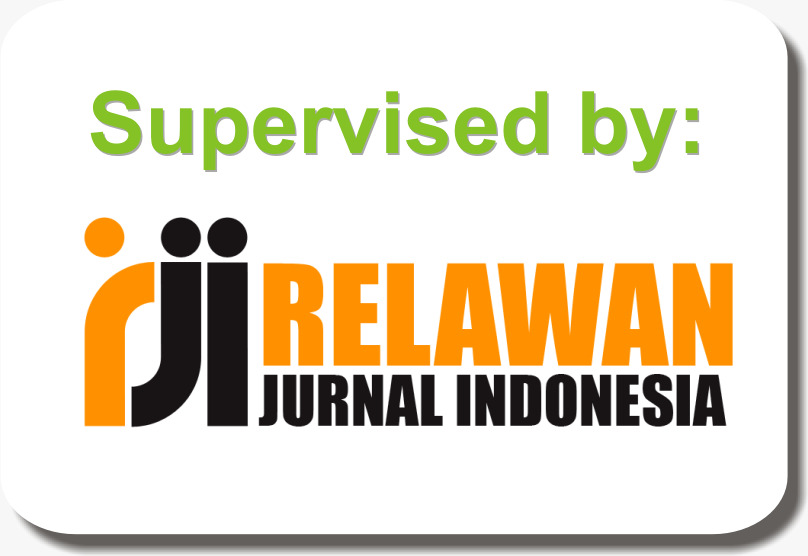REKONTRUKSI MODEL 3D DARI BANYAK GAMBAR MENGGUNAKAN ALGORITMA STRUCTURE FROM MOTION (SFM) DAN MULTI VIEW STEREO (MVS) BERBASIS COMPUTER VISION
DOI:
https://doi.org/10.31598/jurnalresistor.v3i2.655Keywords:
3D Reconstruction, SFM, MVS, Meshroom, Penataran TempleAbstract
With the development of the field of Information and Computer Technology (ICT), three-dimensional technology (3D) is also growing rapidly. Currently, the need to visualize 3D objects is widely used in animation and graphics applications, architecture, education, cultural recognition and virtual reality. 3D modeling of historical buildings has become a concern in recent years. 3D reconstruction is a documentation effort for reconstruction or restoration if the building is destroyed. By using a 3D model reconstruction approach based on multiple images using the Structure From Motion (SFM) and Multi View Stereo (MVS) algorithm, it is hoped that the 3D modeling results can be used as an effort to preserve 3D objects in the cultural heritage area of Penataran Temple. This research was conducted by taking an object in the form of photos as many as 61 pictures in the area of the Blitar Penataran Temple. The resulting photos are reconstructed into a 3D model using the Structure From Motion algorithm in the meshroom. In this study, a test was carried out on the original image with the compressed image for reconstruction to be compared to the 3D reconstruction process from the two input data. From 61 images processed using the Structure Form Motion algorithm, 33 camera pose and 3D point data were obtained, both original and compressed images. For the number of iterations the compressed image is 1.4% less than the original image and takes 43.53% faster than the original image.
References
[2] Dipanda, Albert & Woo, Sungyun. (2005). Towards a real-time 3D shape reconstruction using a structured light system. Pattern Recognition. 38. 1632-1650. 10.1016/j.patcog.2005.01.006.
[3] Prakoonwit, Simant & Benjamin, Ralph. (2007). 3D surface point and wireframe reconstruction from multiview photographic images. Image and Vision Computing. 25. 1509-1518. 10.1016/j.imavis.2006.12.019.
[4] Park, Jong-Seung. (2005). Interactive 3D reconstruction from multiple images: A primitive-based approach. Pattern Recognition Letters. 26. 2558-2571. 10.1016/j.patrec.2005.05.009.
[5] Suharsana, 1997, Fotogrametri Dasar, Jurusan teknik Geodesi, Fakultas Teknik Universitas Gadjah Mada, Yogyakarta.
[6] Atkinson, K. B., 1996, Close Range Photogrametry and Machine Vision. Whittles Publishing. London, UK.
[7] Hwang, Jin-Tsong & Chu, Ting-Chen. (2016). 3D BUILDING RECONSTRUCTION BY MULTIVIEW IMAGES AND THE INTEGRATED APPLICATION WITH AUGMENTED REALITY. ISPRS - International Archives of the Photogrammetry, Remote Sensing and Spatial Information Sciences. XLI-B1. 1235-1241. 10.5194/isprs-archives-XLI-B1-1235-2016.
[8] Scharstein, Daniel & Szeliski, Richard. (2002). A Taxonomy and Evaluation of Dense Two-Frame Stereo Correspondence Algorithms. International Journal of Computer Vision. 47. 7-42. 10.1023/A:1014573219977.
[9] Okutomi, Masatoshi & Kanade, Takeo. (1993). A Multiple-Baseline Stereo.. IEEE Trans. Pattern Anal. Mach. Intell.. 15. 353-363. 10.1109/CVPR.1991.139662.
[10] Tsai, Roger. (1983). Multiframe Image Point Matching and 3-D Surface Reconstruction. Pattern Analysis and Machine Intelligence, IEEE Transactions on. PAMI-5. 159 - 174. 10.1109/TPAMI.1983.4767368.
[11] Baker, Simon & Scharstein, Daniel & Lewis, J.P. & Roth, Stefan & Black, Michael & Szeliski, Richard. (2007). A Database and Evaluation Methodology for Optical Flow. International Journal of Computer Vision. 92. 1-31. 10.1007/s11263-010-0390-2.
[12] Furukawa, Yasutaka & Hernandez, Carlos. (2015). Multi-View Stereo: A Tutorial. Foundations and Trends® in Computer Graphics and Vision. 9. 1-148. 10.1561/0600000052.
[13] https://alicevision.org/#photogrammetry (akses tanggal 1 Agustus 2019).
Downloads
Published
How to Cite
Issue
Section
License
Copyright (c) 2020 Moch. Kholil, Ismanto Ismanto, M. Nur Fu’ad

This work is licensed under a Creative Commons Attribution-NonCommercial-ShareAlike 4.0 International License.
Copyright in each article belongs to the author.
- The authors admit that RESISTOR Journal as a publisher who published the first time under
 Attribution-NonCommercial-ShareAlike 4.0 International (CC BY-NC-SA 4.0) License.
Attribution-NonCommercial-ShareAlike 4.0 International (CC BY-NC-SA 4.0) License. - Authors can include writing separately, regulate distribution of non-ekskulif of manuscripts that have been published in this journal into another version (eg sent to respository institution author, publication into a book, etc.), by recognizing that the manuscripts have been published for the first time in RESISTOR Journal







1.png)









